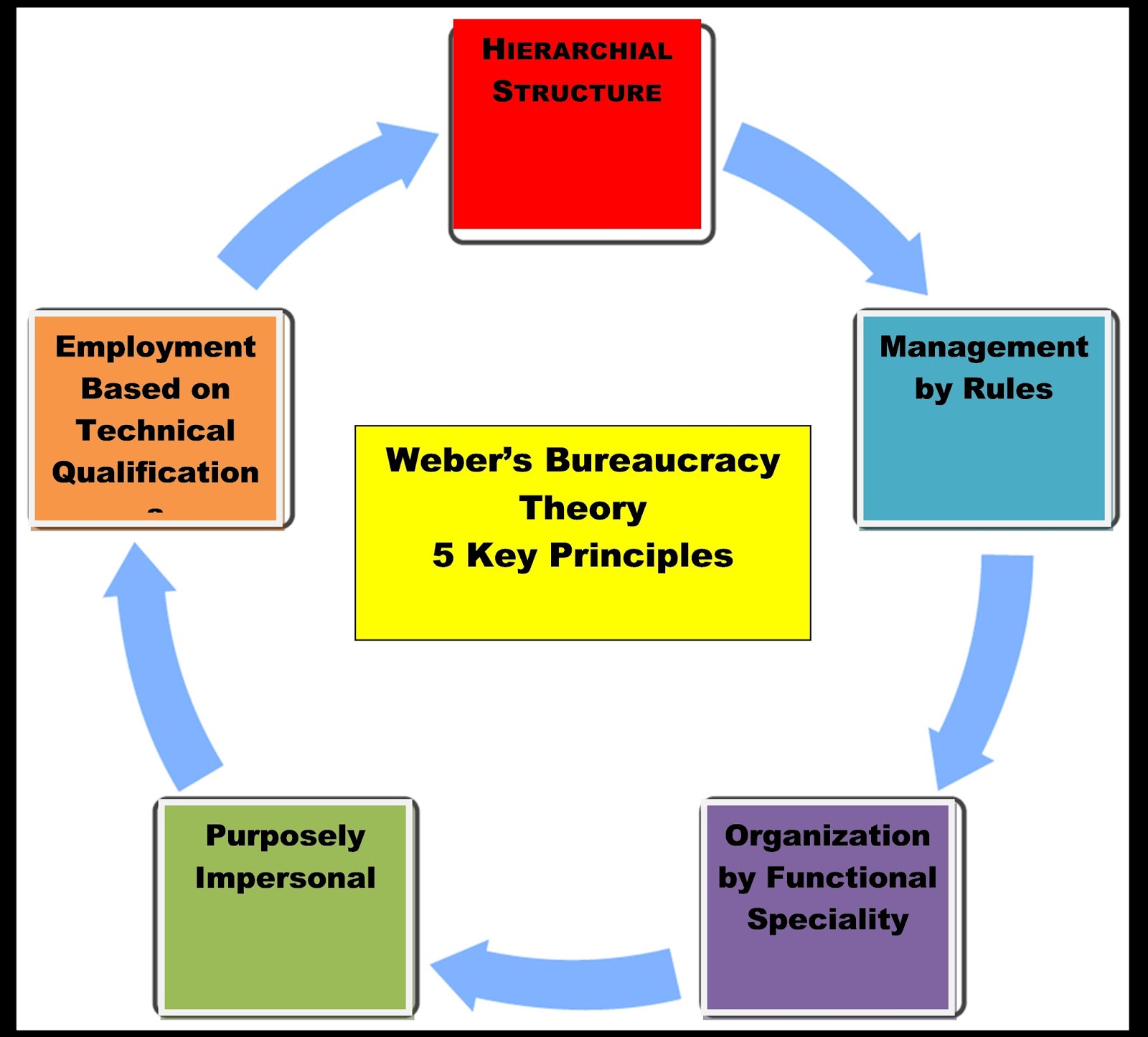Ever wondered why some organizations hum with efficiency while others seem perpetually stuck in a bureaucratic quagmire? The answer, in part, lies in the work of Max Weber, a German sociologist who revolutionized our understanding of organizations. His groundbreaking theory, known as “Max Weber Management Theory,” isn’t just a dusty relic of sociological history – it shapes the landscape of modern workplaces, for better or worse.

Image: 074himanimaheshwariim20nitiepomcourse.blogspot.com
Imagine a world without clear hierarchies, standardized procedures, or objective qualifications. It might feel liberating, but chaos would likely ensue. Weber’s theory, however, provides a framework for structure and order, a blueprint for managing complex systems in an era of rapid industrialization and urbanization.
The Birth of Bureaucracy: A Legacy of Iron Cages
Weber’s theory emerged in the late 19th and early 20th centuries, a time of immense societal change. Traditional power structures based on kinship or feudal ties were fading, replaced by the impersonal, hierarchical structures of modern bureaucracies. Weber envisioned these bureaucracies as “iron cages,” systems designed for efficiency but potentially stifling individual freedom.
The Essential Elements of Max Weber Management Theory
Weber’s theory rests on six fundamental pillars:
- Hierarchy of Authority: A clear chain of command, with power flowing from the top down. This ensures accountability and decision-making processes.
- Division of Labor: Tasks are specialized, allowing for increased expertise and productivity.
- Written Rules and Regulations: Explicit guidelines ensure consistency and uniformity, eliminating ambiguity and subjectivity.
- Impersonality: Decisions are based on objective criteria, minimizing personal biases and favoritism.
- Technical Competence: Individuals are selected on their qualifications, not personal ties, fostering professionalism and meritocracy.
- Formal Communication: Communication channels follow established procedures, ensuring clear and accurate information flow.
The Strengths of a Bureaucratic System
Weber’s theory, despite its criticisms, offers undeniable advantages:
- Efficiency and Predictability: By implementing standardized procedures and clear lines of authority, bureaucracies aim to maximize productivity and minimize inefficiencies.
- Transparency and Accountability: Written rules and clear communication channels foster transparency and accountability, reducing corruption and power abuses.
- Fairness and Objectivity: By emphasizing merit-based selection and impersonal decision-making, bureaucracies strive for fairness and impartiality in promotions and resource allocation.

Image: fity.club
The Shadows of the Iron Cage
While Weber’s vision of a rational, efficient bureaucracy was appealing, it wasn’t without its limitations:
- Rigid Structures: The adherence to strict rules can lead to inflexibility, making it difficult to adapt to unexpected situations or changing circumstances.
- Dehumanization: Focus on processes and efficiency can overshadow individual needs and contributions, leading to feelings of disenfranchisement and alienation.
- Red Tape and Slow Decision-Making: The hierarchical structure and layers of authorization can result in lengthy approval processes and bureaucratic bottlenecks.
Beyond the Bureaucracy: The Evolution of Management Theory
Weber’s theory, while providing a valuable framework for understanding organizations, has been critiqued and expanded upon over the years, giving rise to more dynamic and human-centered approaches to management.
- Human Relations Movement: This movement recognized the importance of employee motivation, satisfaction, and interpersonal relationships in enhancing workplace performance.
- Contingency Theory: This theory posits that the best management approach varies depending on the specific context, such as the organization’s size, industry, or culture.
- Systems Theory: This theory views organizations as interconnected systems where all parts are influenced by each other. It emphasizes the importance of collaboration, communication, and feedback loops.
Modern Applications of Max Weber Management Theory
Despite its critiques, Weber’s theory continues to influence modern management practices. Many contemporary organizations lean on elements of his framework, including:
- Hierarchical Structure: Corporations, government agencies, and non-profit organizations often maintain a clear hierarchy with well-defined roles and reporting relationships.
- Standardized Procedures: From customer service protocols to financial audits, most organizations employ standardized procedures to ensure consistency and quality.
- Formal Communication Channels: Corporate emails, memos, and formal meetings contribute to a structured communication flow within organizations.
Navigating the Bureaucracy: Insights from Leading Management Experts
The key takeaway from Weber’s theory is not to embrace rigid bureaucracy blindly, but to understand its nuances and apply its principles thoughtfully. “The challenge lies in finding the right balance between structure and flexibility,” notes Dr. Sarah Collins, a leading expert in organizational behavior. “A successful organization requires clarity in its processes, but also a willingness to adapt and empower employees.”
Empowering Yourself in the Modern Workplace
How can you navigate the complexities of the modern workplace, where Weber’s principles are still at play?
- Understand the Rules: Familiarize yourself with your organization’s policies and procedures, so you can operate efficiently and avoid unnecessary delays.
- Embrace Collaboration: Even in a hierarchy, fostering collaboration and open communication with your colleagues can lead to innovation and increased efficiency.
- Advocate for Change: Identify areas where rigid processes hinder creativity or impede progress. Be a constructive voice for change within your organization.
Max Weber Management Theory
The Legacy of Max Weber: A Constant Balancing Act
Max Weber’s legacy leaves us with a crucial reminder: organizations, like any intricate system, require balance. We must strive for efficiency without stifling innovation, for order without sacrificing human connection. This requires a constant dialogue about how to modernize Weber’s theory, preserving its inherent strengths while adapting to the evolving needs of our times. So, as you navigate the complexities of your career, recall the power of structure, the value of collaboration, and the importance of advocating for a workplace that champions both efficiency and human potential.






